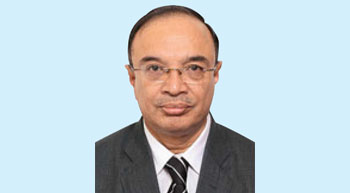AB Pandya, Chairman, Central Water Commission (CWC), believes that the Commission´s efforts can improve the water-related issues facing India.
Water contamination is a major health hazard. Can anything be done to rectify the situation?
The country is facing a problem of pollution and contamination mainly due to geogenic contamination, excessive use of fertilisers and pesticides and discharge of sewage and industrial effluents. The water quality situation of both surface and groundwater is deteriorating daily.
Except major cities, groundwater is the main source of drinking water. About 85 per cent of rural population uses groundwater for drinking and domestic purposes. High concentration of fluoride in groundwater beyond the permissible limit of 1.5 mg/l poses a health problem. Studies conducted by CGWB (Central Ground Water Board) have indicated that groundwater in 224 districts in 19 states contain excessive fluoride. Arsenic, as a contaminant, is significant in terms of its toxic nature with exceedingly diverse manifestations of poisoning. Elevated concentrations of arsenic in groundwater are reported from various parts but particularly affecting the large parts of the Ganga-Brahmaputra Plains. High concentration of arsenic beyond the permissible limit of 0.05 mg/l in groundwater has been reported from 86 districts of 10 states. High concentration of iron (greater than 1.0 mg/l) in groundwater has been observed in more than 1.1 lakh habitations. Groundwater contaminated by iron has been reported from 22 states and the union territory of the Andaman & Nicobar Islands.
Excessive use of fertiliser and pesticides are not only contaminating the groundwater but surface water as well. There is urgent need to formulate a detailed plan of action for water quality management by involving all stakeholders. At present, the network for water quality monitoring is maintained by different departments. This is not adequate to provide the true picture. It sometimes leads to a non-focused approach and wasteful expenditure. There is a need to strengthen the monitoring network to acquire the data on existing water sources at a micro level. Further, a mechanism for sharing of data between various departments will have to be developed.
There are different remedial options to the above-mentioned contamination in drinking water. Various types of ex-situ removal techniques are available for adoption at the household or community levels. Some options for treatment are source substitution, coagulation, precipitation, oxidation, ion exchange, membrane filtration and adsorption. For addressing the problem of arsenic contamination, use of dug wells which are arsenic-free is a viable option.
Further, providing drinking water supply from arsenic free deeper aquifers (hydro-geologically suitable ones) and surface water based supply can be adopted on a long-term basis. The use of fertilisers and pesticides on sound scientific and agronomic principles will also help. However, the success of any of the mitigation measures depend upon awareness-creation and capacity building.
What are the awareness levels? Is anything being done to address it?
The lack of awareness among common people regarding deteriorating quantity and quality of water is major bottleneck in planning and implementing water pollution mitigation measures. The Ministry of Water Resources, River Development and Ganga Rejuvenation is implementing a scheme, Information Education and Communication, with an aim to create awareness among various target groups about the importance of development and management of water resources in a holistic manner. The emphasis is on a coordinated effort for addressing various water-related issues and to propagate the policies and programmes of the Ministry. The activity under the scheme includes organisation of workshop and training programme; organisation of essays, debates, painting competitions in schools and colleges; conducting student tours to the Water Resources Museum, site projects; advertisements in newspaper, distribution of publicity material such as booklets, leaflets, posters, comics and publicity through electronic and digital media. Further, under the Jal Kranti Abhiyan, various tailor-made awareness campaigns have been planned to address problems and suggest solutions.
What are your focus areas over the next five years?
Right now, we are in the middle of the 12th Five Year Plan. We would like to focus on the activities already envisaged in various schemes of the plan. This includes strengthening and modernisation of Hydrological Observations Network and Flood Forecasting activity in the country.
We have planned to add about 650 more stations in our Hydrological Observations Network and also to extend Flood Forecasting services at 100 additional sites. Right now, we are only forecasting water levels in the rivers at designated sites. Steps are ongoing to introduce inundation forecasting in the days to come. The operation of India-Water Resources Information System is also a very important activity of CWC. We are trying to add all possible data in the system so that the same can be utilised for planning and decision making in future. We are trying to form a dedicated set-up, National Water Information Centre, for operation of the India-WRIS. The National Water Informatics Centre will provide a single-window service to empower, inform and enrich every citizen with up-to-date and reliable water data and information through the web on a GIS platform.
We are already providing consultancy for design and implementation of projects in India and neighbouring countries. This will continue and we will ensure that projects are taken up in India with the latest technologies available worldwide. One of the important focus areas is to work for development of an institutional mechanism in the country to provide for proper surveillance, inspection, operation and maintenance of all dams to ensure their safe functioning. We are working with the Ministry for enactment of the Dam Safety Bill which will provide a legislative framework to develop the mechanism. Last but not least, we are working with the involvement of all stakeholders to increase awareness about the value of water and the need for its conservation. I am sure our efforts will improve the water scenario.



Leave a Reply
You must be logged in to post a comment.